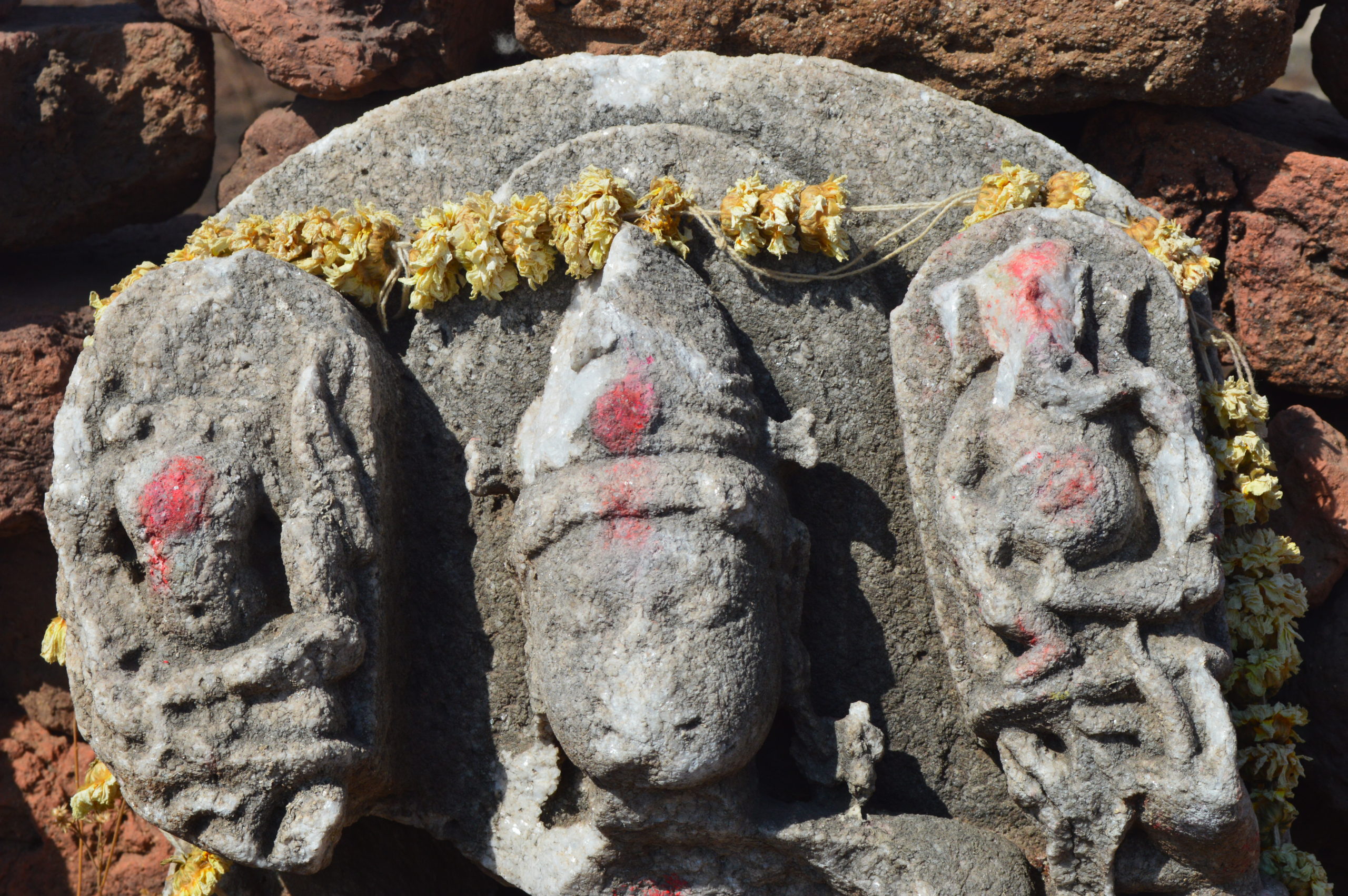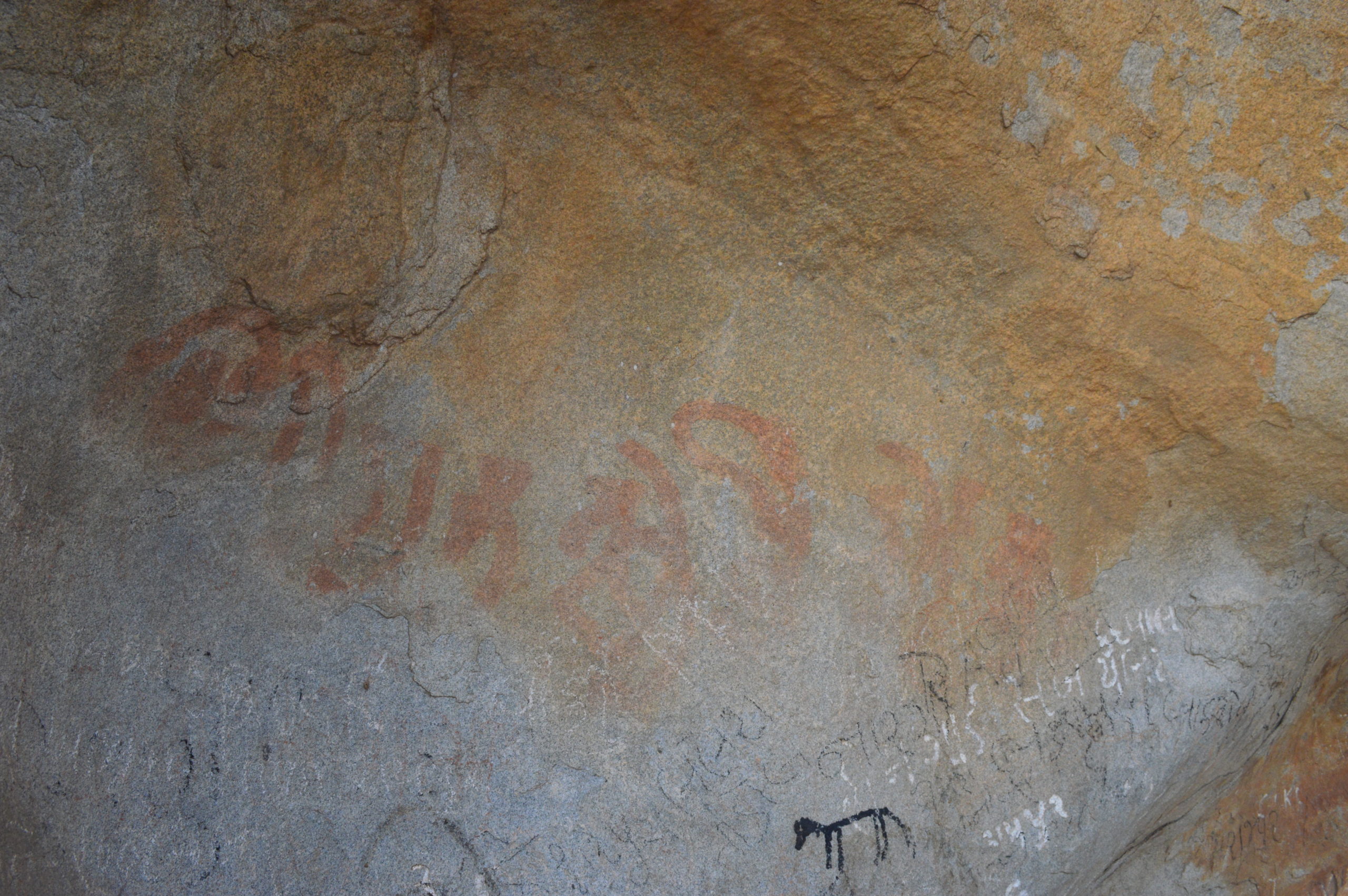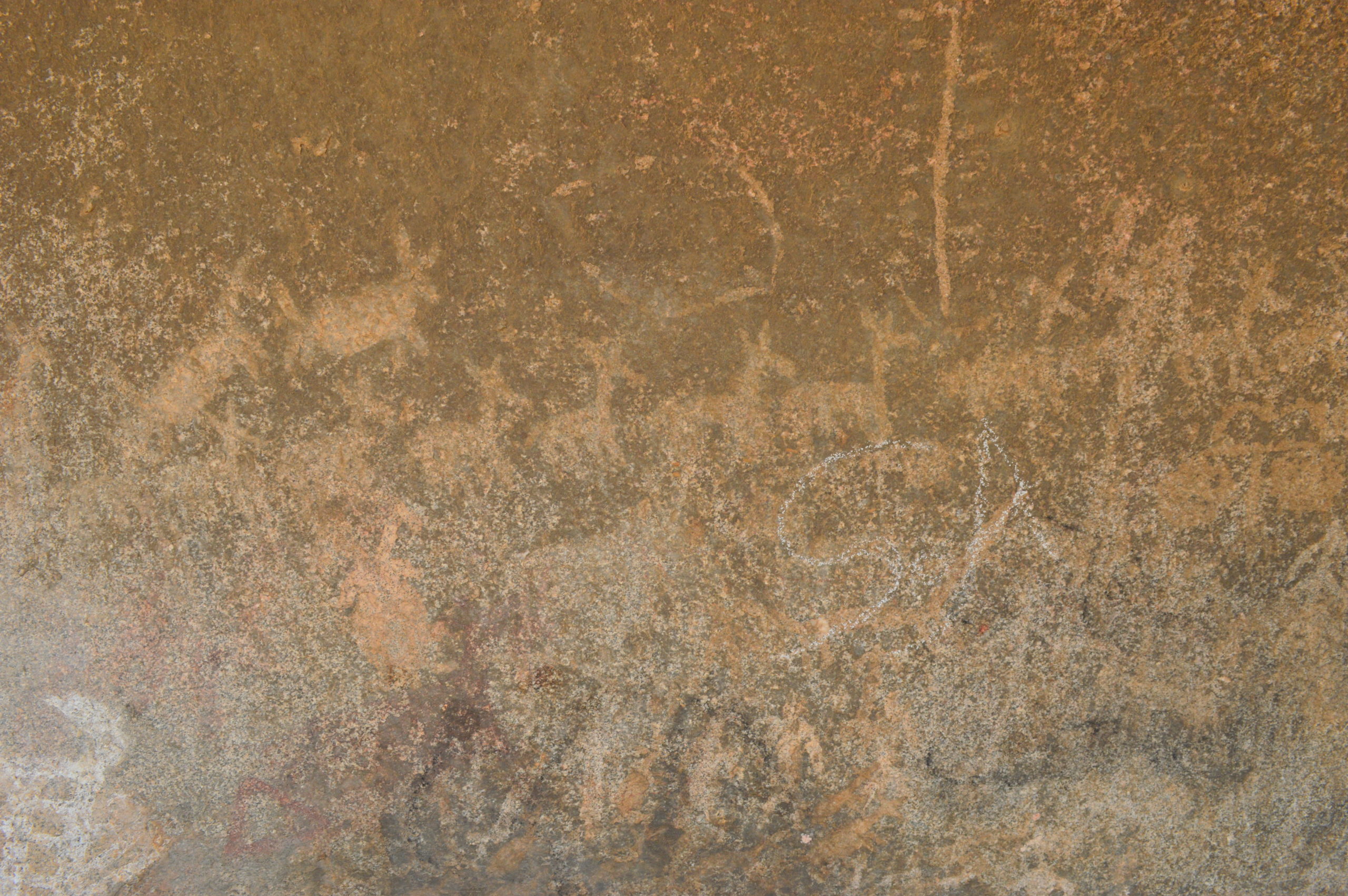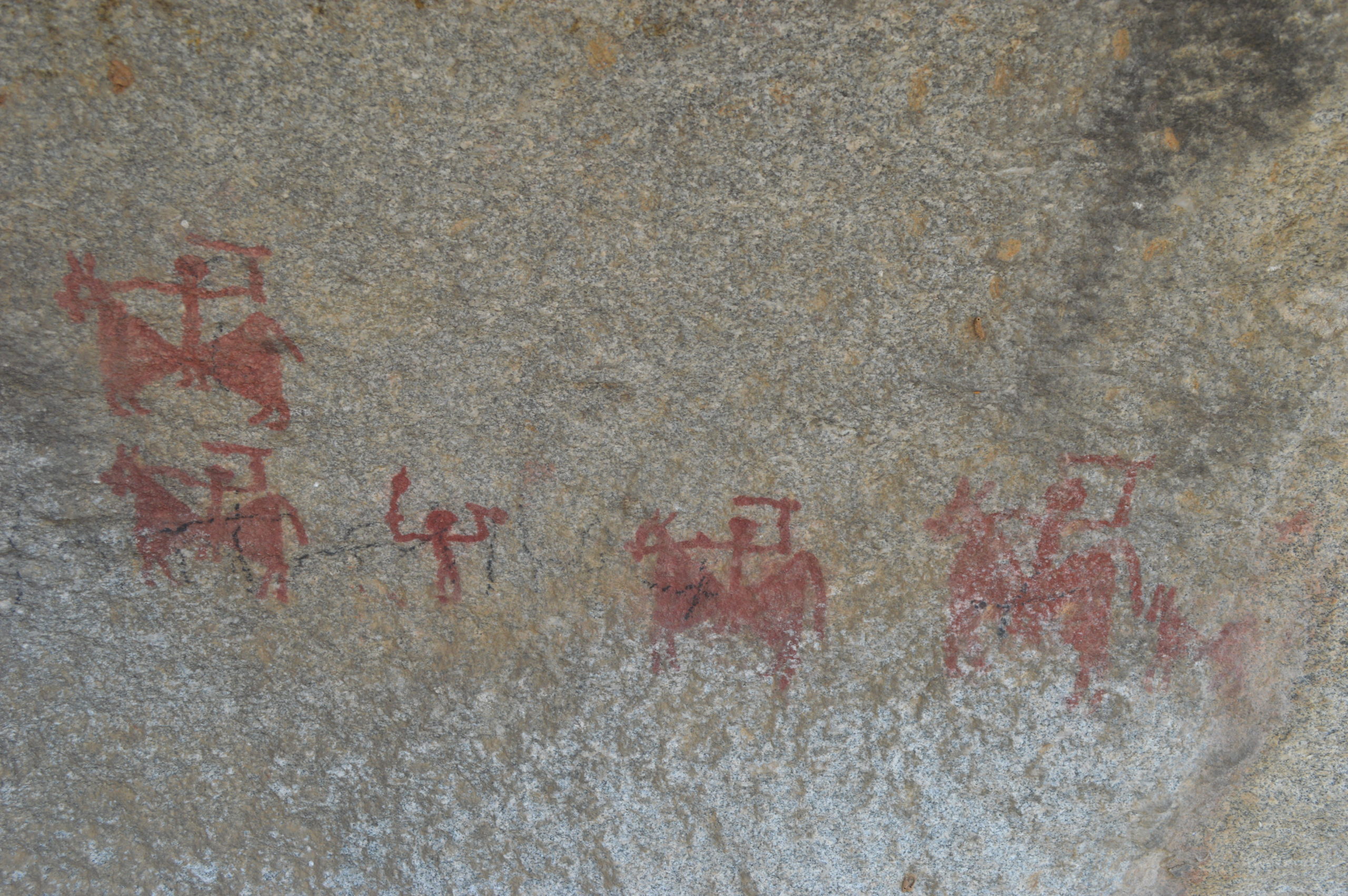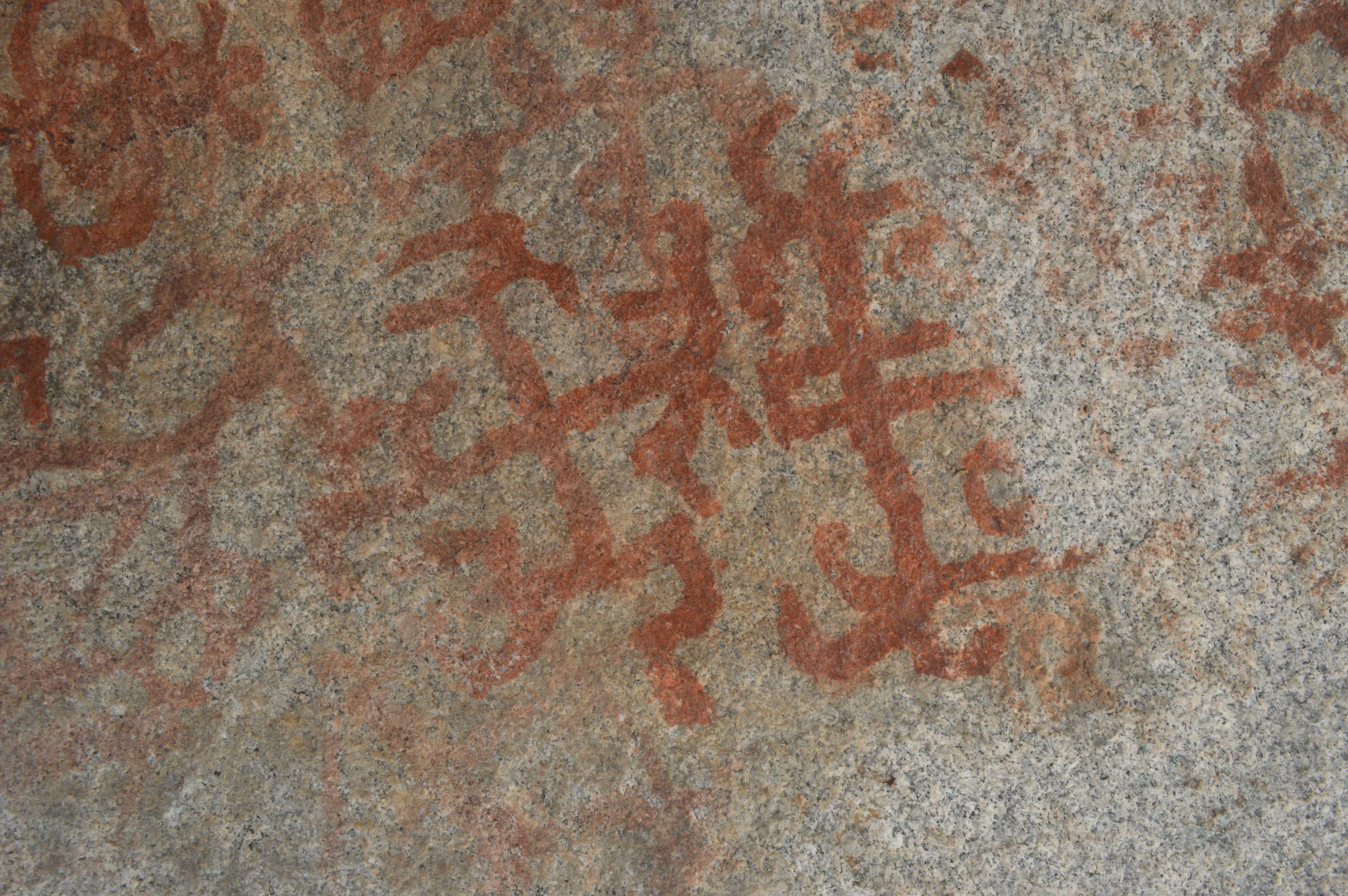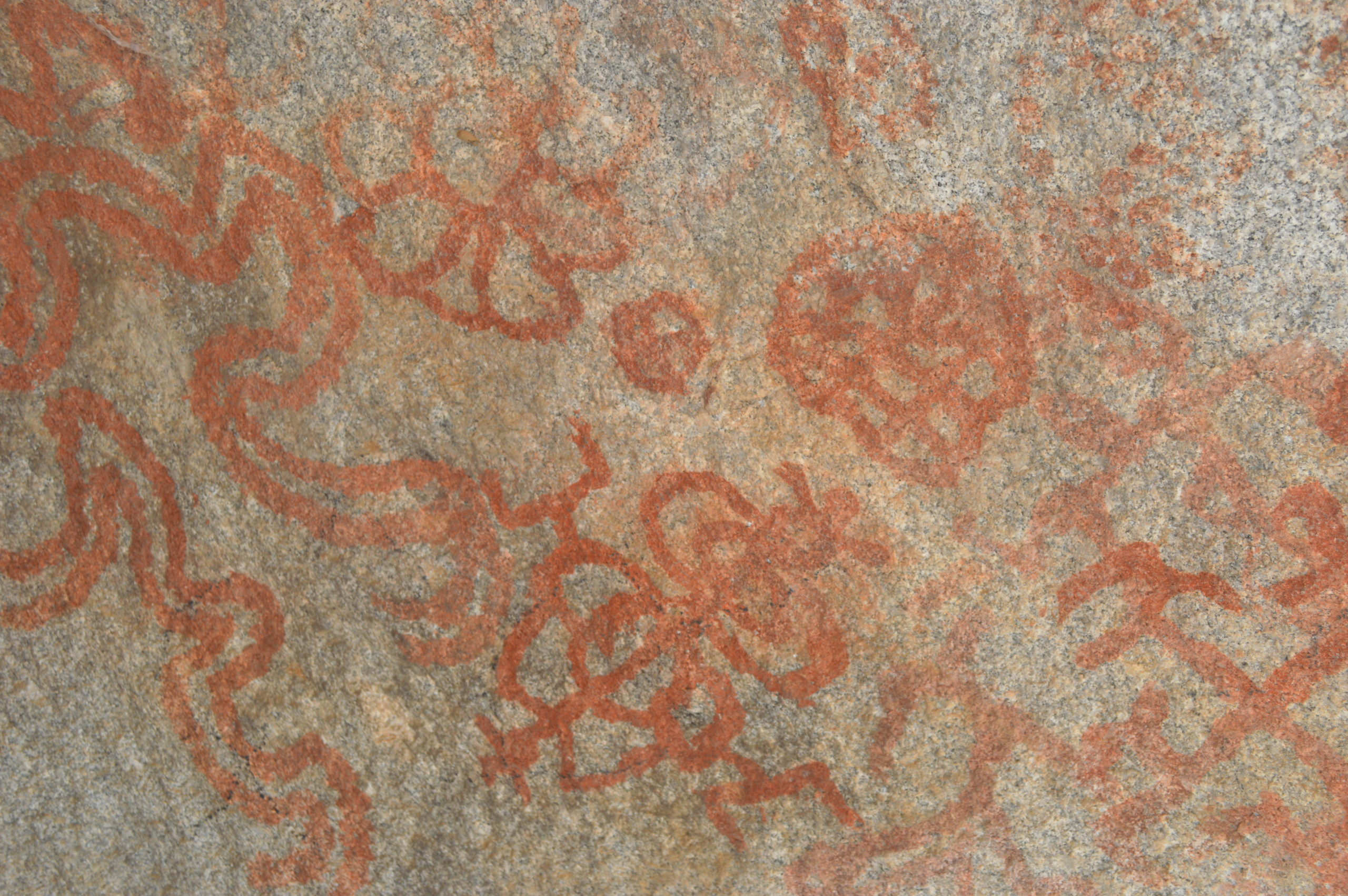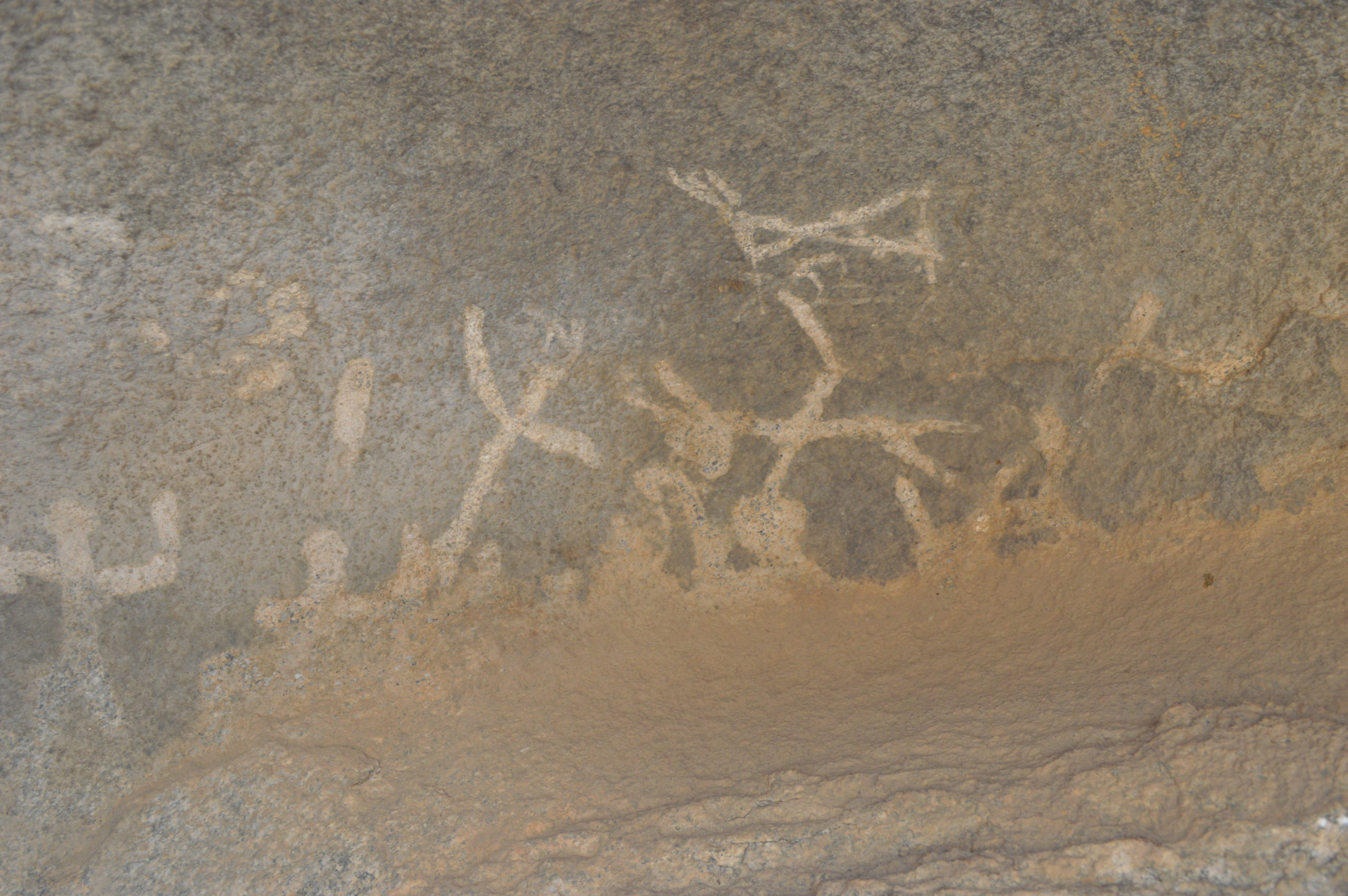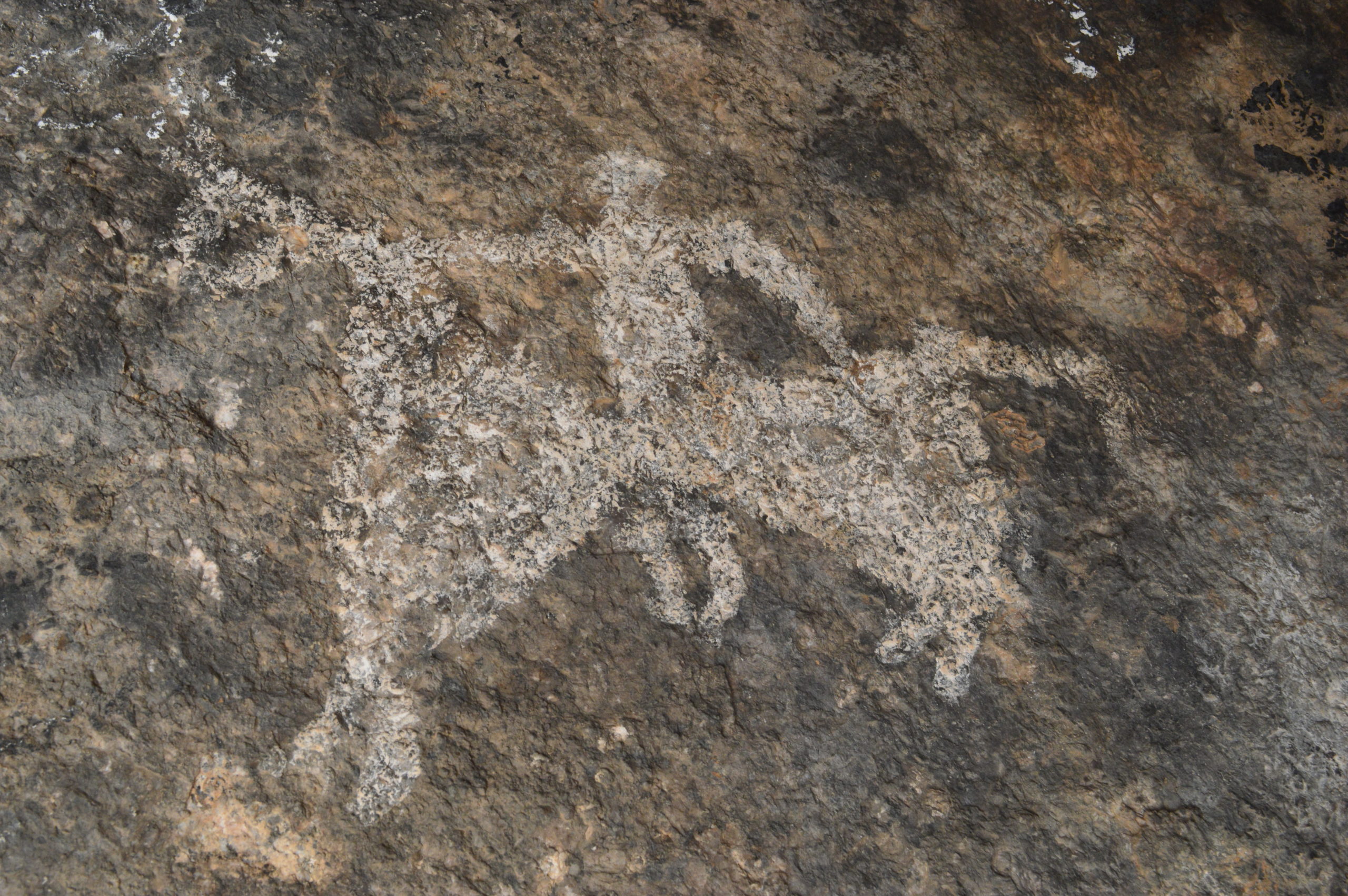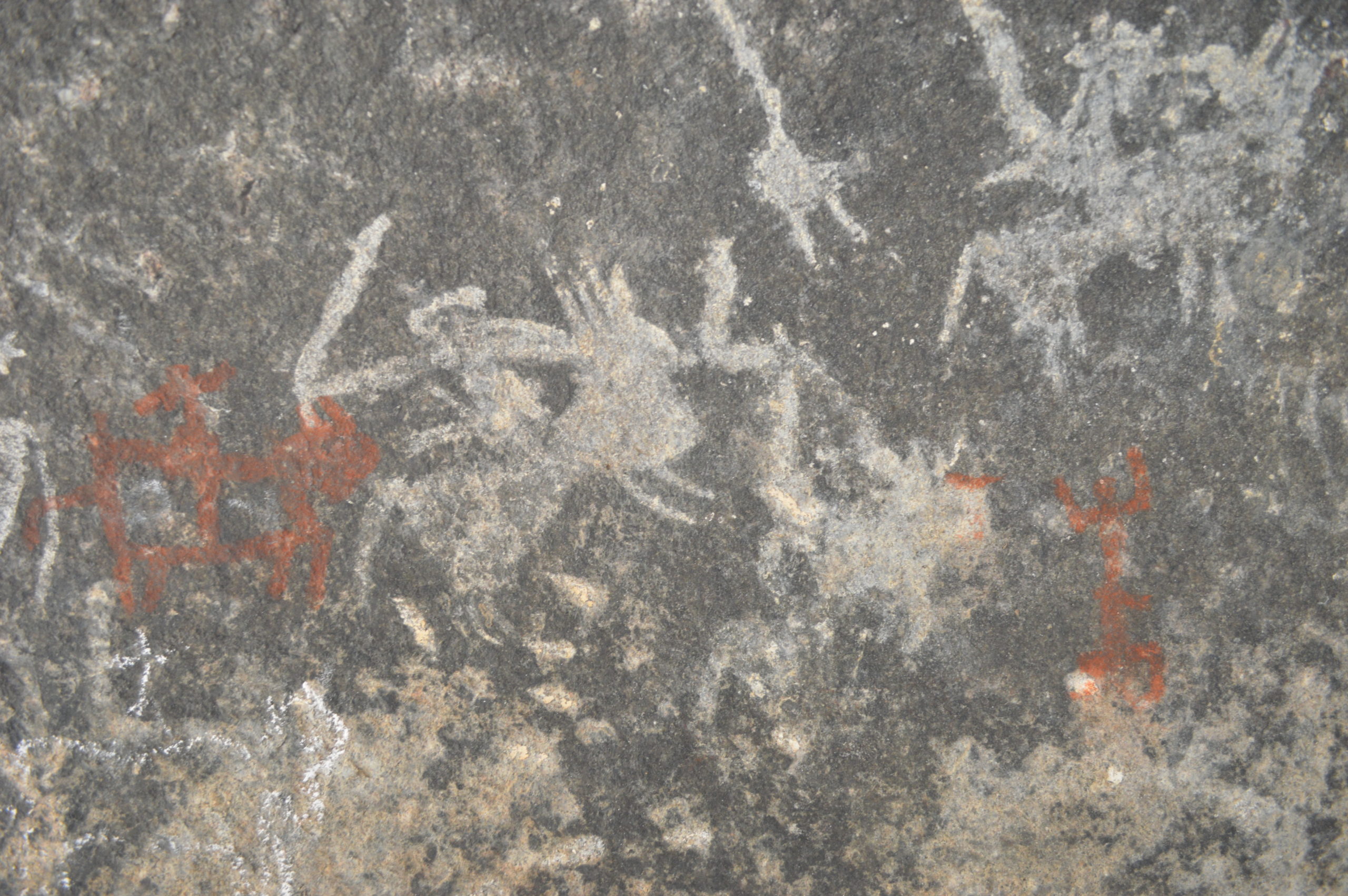छोटाउदेपुर जिला गुजरात राज्य के पूर्वा बेल्ट म स्थित है । इसमें मुख्य रूप से राठवा , नायक , धनक , भील , इंगरभिल आदिवासी जाति का निवास है । पूरा क्षेत्र पहाड़ियां और जंगलों से आच्छादित है । गुफा चित्र छोटाउदेपुर तालुका के तेजगढ़ म कोराज इंगर से लेकर पावीजेतपुर तालुका म हाथीपगला तक पाए जाते ह । इन चित्रों को देखकर हमें पता चलता है कि आदमी ने चित्र के माध्यम से जो कुछ देखा था , उसका प्रतिनिधित्व किया होगा । ड्राइंग के लिए स्थान और पत्थरों को भी इस तरह से चुना गया है कि हवा , पानी और सूरज का प्रभाव बहुत कम है । अधिकांश पटिंग पत्थर का छत म पाए जाते ह । कई प्रकार के चित्र ह विशेष रूप से मनुष्य , जानवर , शिकार , पक्षी , घोड़े की सवारी , मानव , कुटिल रेखाएं । इन सभी चित्रों को सफेद और लाल रंग में चित्रित किया गया है । क्षेत्रों के नाम भी चित्र के रंग के आधार पर दिए गए हैं। उदाहरण के लिए , कोराज डूंगर म सफेद चित्रों वाले क्षेत्र को धोराभुतोनी घोड़ी के रूप म जाना जाता है और लाल चित्रों वाले क्षेत्रको स्थानीय लोगों दवारा लालभुतोनी घोड़ी के रूप में जाना जाता है । इस प्रकार चित्रों के रंग के आधार पर क्षेत्र की पहचान भी की जाती है ।
गुफा चित्रों का छाप अभी भी आसपास के समूहों में देखी जा सकती है । जैसे कि राठवा समुदाय के धार्मिक भित्ति चित्र , बाबो पिथोरो और भुवा दवारा इस क्षेत्र में उतारा का रस्म में बनाई गई पेटिंग कुछ समान है । अगर हम गुजरात की बात कर तो आज भी कुछ पहाड़ियों पर मंदिरों , शक्ति पीठो , राजाओं और महाराजाओं के महल देखे जा सकते ह । मंदिरों और शक्ति पीठा की पूजा अभी भी की जाती है । इस तरह का विशेषताओं के कारण , भारत अभी भी पूरी दुनिया दवारा एक समृद्ध सांस्कृतिक विरासत वाले देश के रूप म पहचाना जाता है । उसी तरह , कुछ गुफा चित्रों को अभी भी स्थानीय लोर्गा दवारा पूजा जाता है । ये गुफा चित्र यहां का आदिम संस्कृति का एक बड़ी पहचान है । अगर आप छोटाउदेपुर के पहाड़ी इलाके म देख , तो आप तेजगढ़ के कोराज , सिलोज , घोड़ा लखेन , रायपुर , हाथीपगला गाँ में चित्र देख सकते ह । कोराज इंगर के निचले हिस्से म भी नकशीदार पत्थर और प्राचीन मंदिर बने ह । गाँव के देव भी इसके साथ स्थित ह । इसी तरह , रायपुर इंगर में , चित्रों के साथ पुरानी लिपि और पत्थर का नकशीदार मूतियाँ भी है । इस पर्वत के साथ महाभारत से जुड़े कुछ स्थानीय किंवदतियाँ भी हैं । पौराणिक इतिहास के साथ दो झील और सातकुंड , दो बापनी बारी के पत्थर भी हैं । इस पवत को माखानिया डूंगर के नाम से भी जाना जाता है । जबकि हाथीपगला का पहाड़ी में हाथी के पैरों के निशान पत्थर में मुद्रित दिखाई देते हैं । घोड़ा लखेन नाम चित्रों पर आधारित है । पहाड़िा को समग्र रूप से देखते हुए , चित्रकारी , गुफाएं , क्षेत्र किसी कारण से स्थानीय पहचान हैं । यह यहां के आदिवासी समाज का संस्कृति का एक बड़ी पहचान है ।
For our readers, following is the English translation of the original hindi text:
Chotta Udaepur district is situated in the eastern belt of Gujarat. Rathwa, Nayak, Dhanak, Bhil, Dungerbhil are the most prominent tribes residing in this area. Whole area is covered with hills and jungles. Cave paintings are found from Koraj Dungar in Tejgarh Taluka to Hathipgla in Pavijatpur Taluka in The Chhota Udaepur district. Even the names of places are based on the colours used for paintings. For instance, in Koraj Dungar, the area with white paintings is called Dhorabhutoni Ghodi, while the locals address the area with red paintings as Lalbhutoni Ghodi.
The drawings tell us that man represented what he saw through these paintings. Even the selection of sites for paintings is such that there is minimal exposure to the effects of water, air and sunlight. Most of the paintings are found on the rock (cave) ceilings. There are various types of pictures, especially humans, animals, hunting, birds, horse riders, crooked lines, etc. All the drawings are drawn in either white or red colour. Even the names of places are based on the colours used for paintings. For instance, in Koraj Dungar, the area with white paintings is called Dhorabhutoni Ghodi, while the locals address the area with red paintings as Lalbhutoni Ghodi. In this way various places are recognised on the basis of colour of the paintings.
The affect of cave paintings is still visible in the communities living in the surroundings. For example, the religious graffiti, Banopithora and Bhuva paintings done in the Utara rituals are all quite similar to each other. As we talk about Gujarat, there are quite a few temples, shaktipeeth and palaces of kings (Rajas and Maharajas) still visible on several hills. Prayers are still done in the temples and Shaktipeeth. Due to specialities like these, India is still considered as a cultural heritage custodian around the world. Likewise, various cave paintings are still worshiped by the native people. These cave paintings are an important identity of primitive culture of the region.
If one visits the hilly region of Chhota Udaepur, one can observe paintings in Koraj (in Tejgarh), Siloj, Ghoda Lekhan, Raipur, Hathipagla villages. There are carved stones and historical temples even on the foothills of Koraj Dungar. With these is established the village’s deity. Similarly, in Raipur Dungar, primitive script and carved sculpture of stones can be observed along with paintings. This hill is also the subject of various regional legends linked to Mahabharata. Two lakes and satkund, two stones of Bapani baro are also linked to ancient history. This hill is also known as Makhaniya Dungar. On the other hand, on the Hathipagla hill, one can find elephant’s feet stamped in stone. As for the name Ghoda Lekhan, it is based on the paintings.
An overview of these hills depicts them as being the defining regional characteristic through paintings, caves, territory, etc. These are the crucial elements of the cultural identity of regional tribes.
This Photo Essay is brought to you in collaboration with Sthalantar Foundation. For more information on their work, visit Instagram or Youtube.



